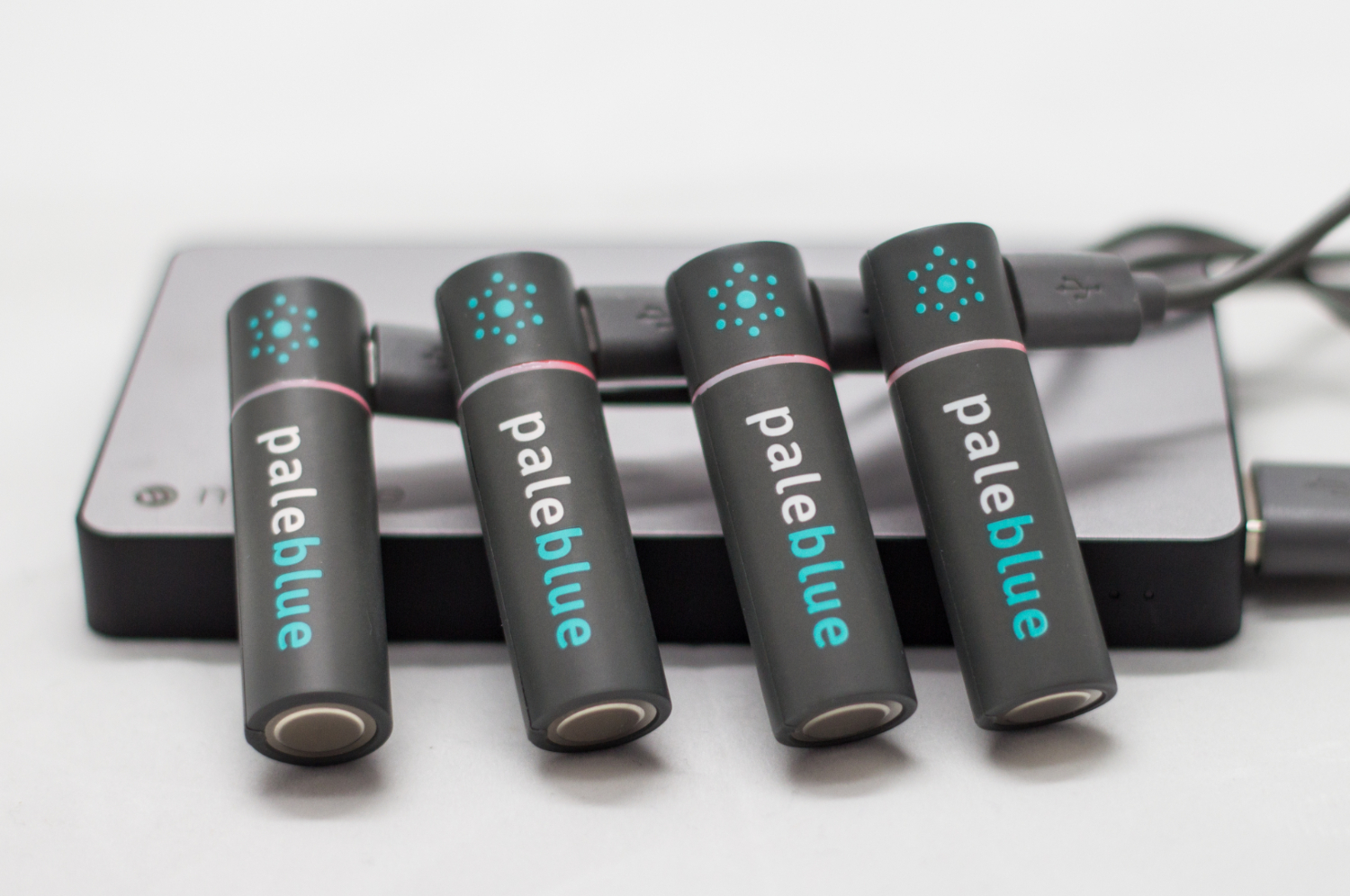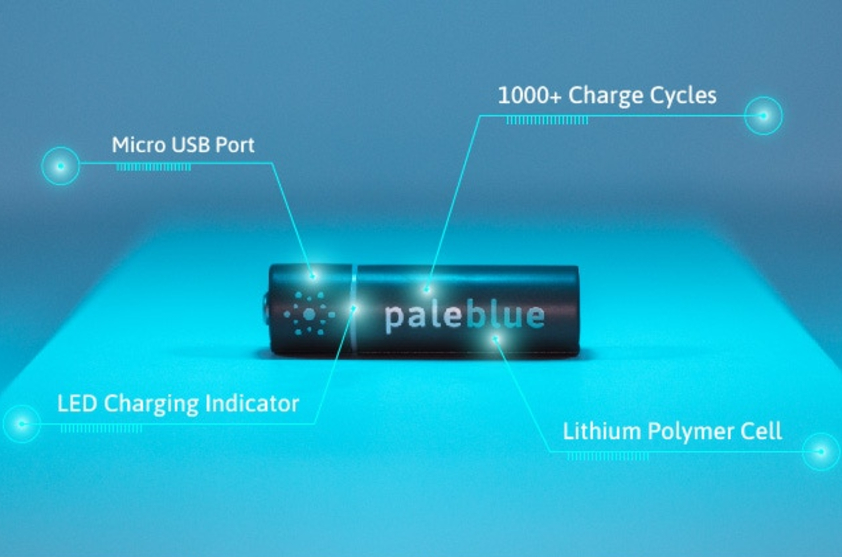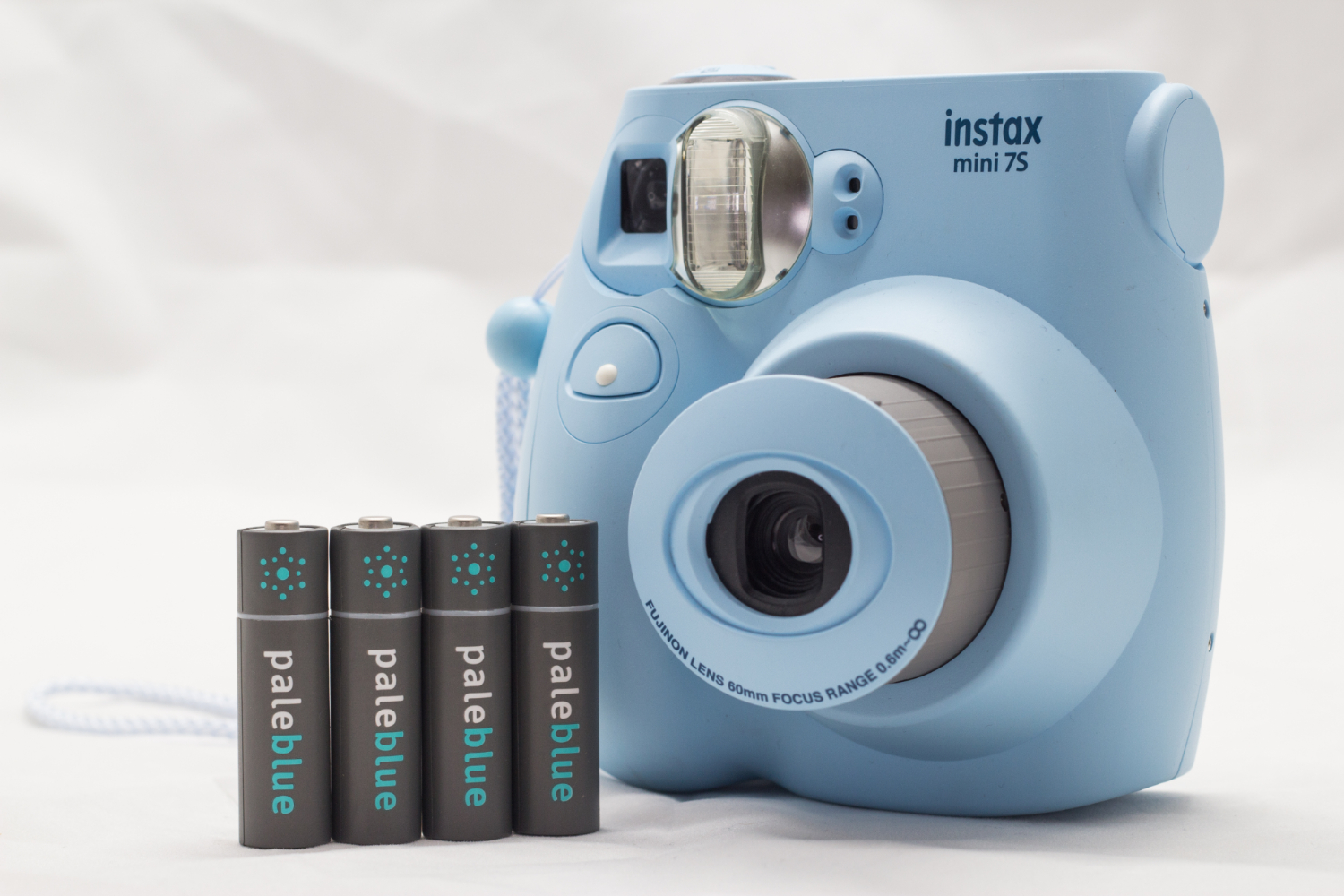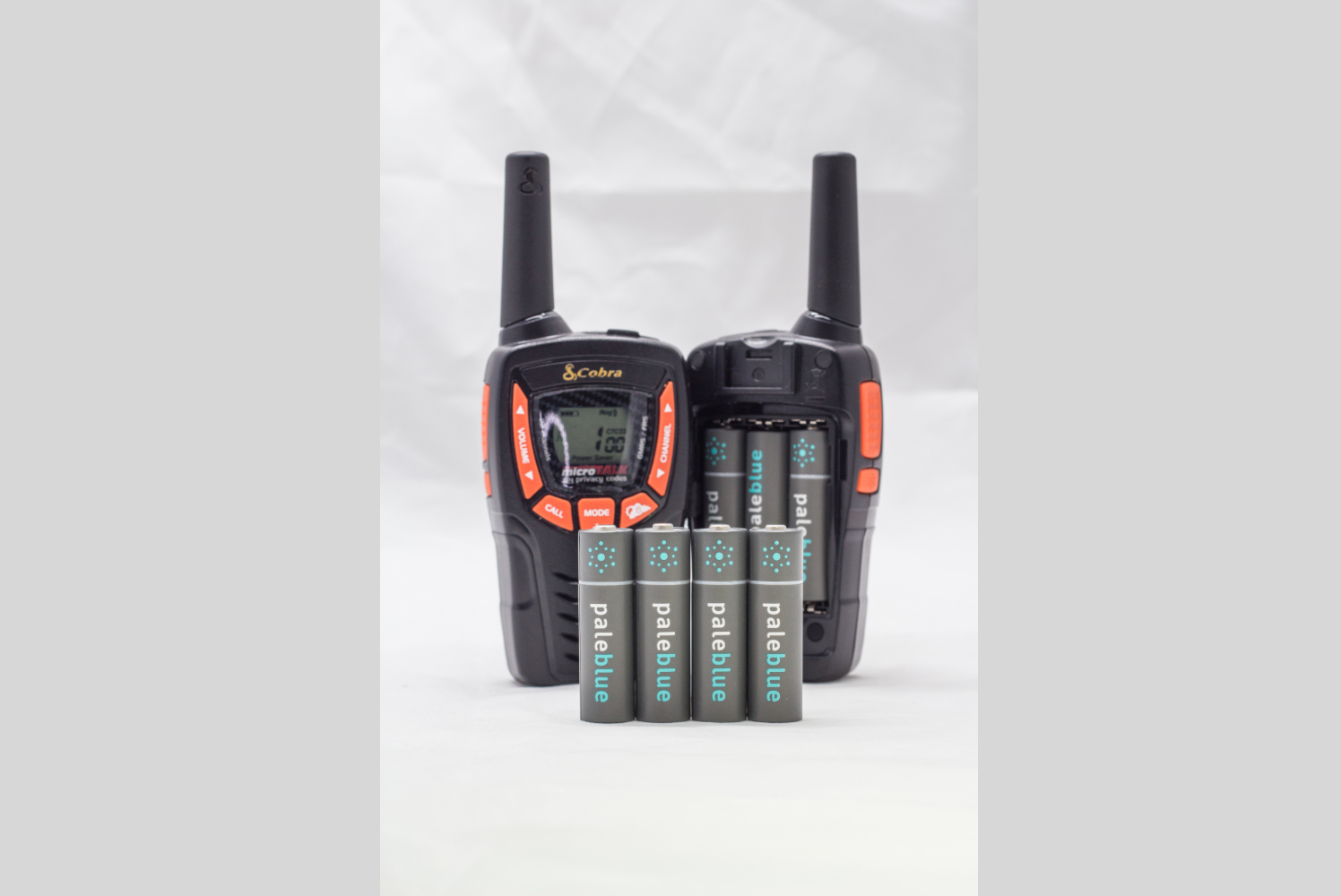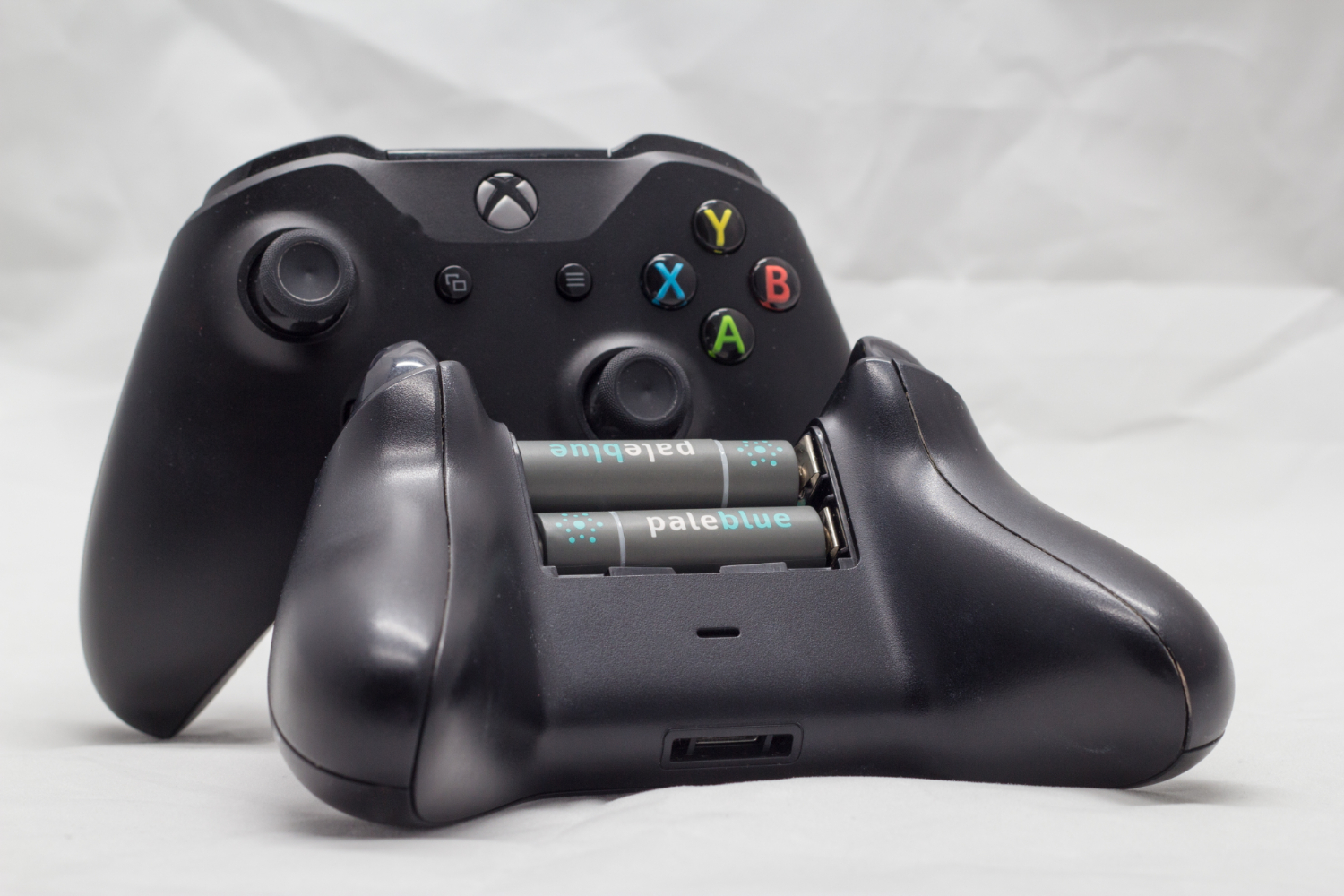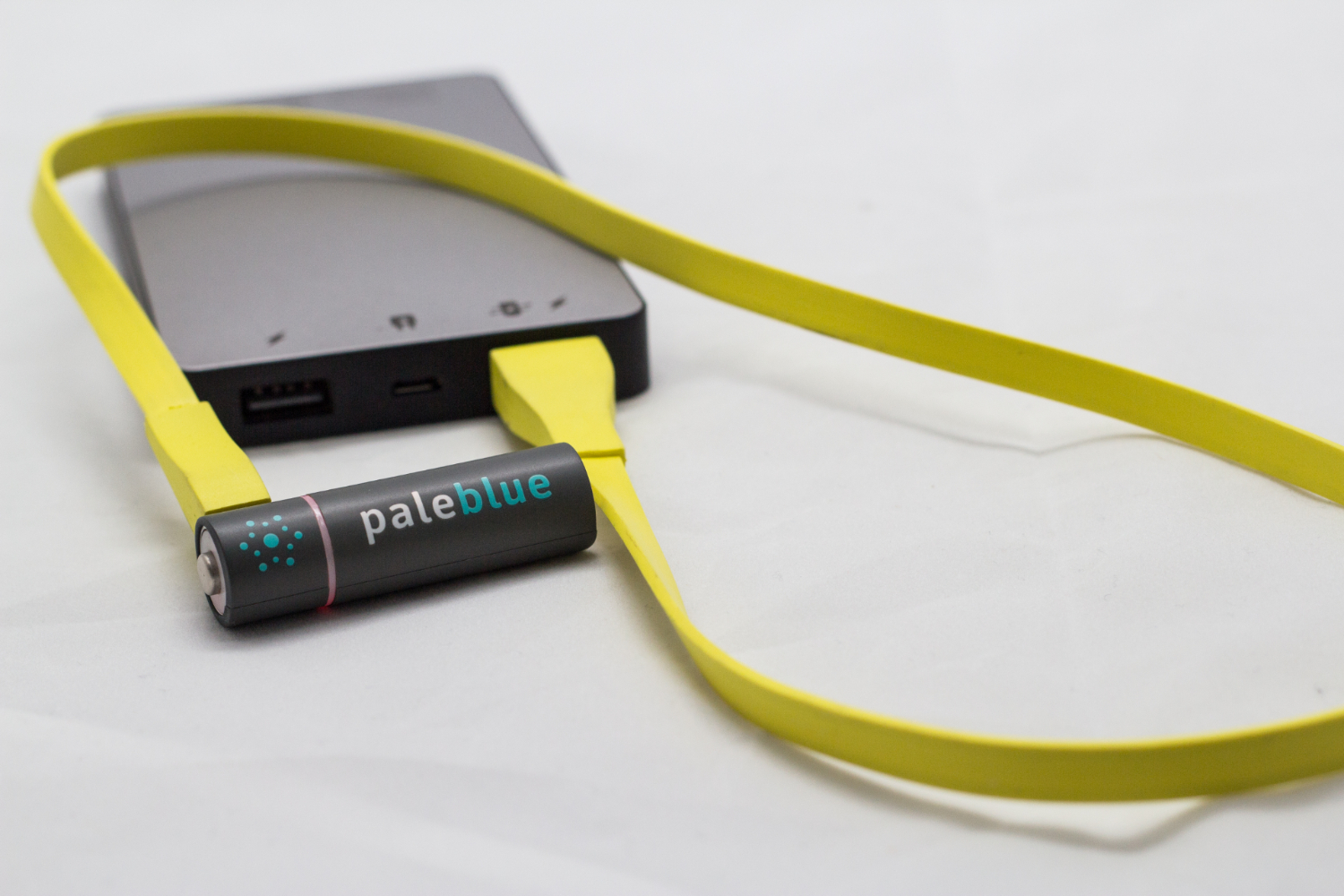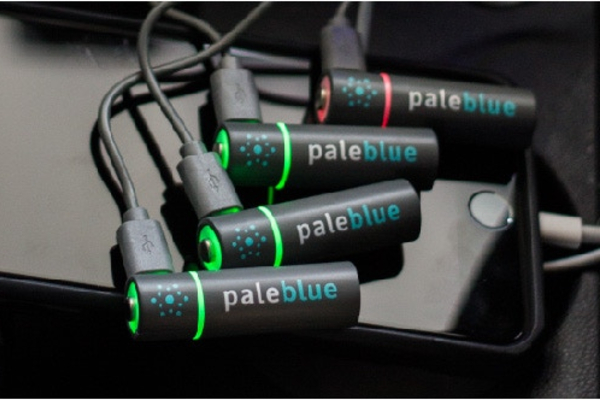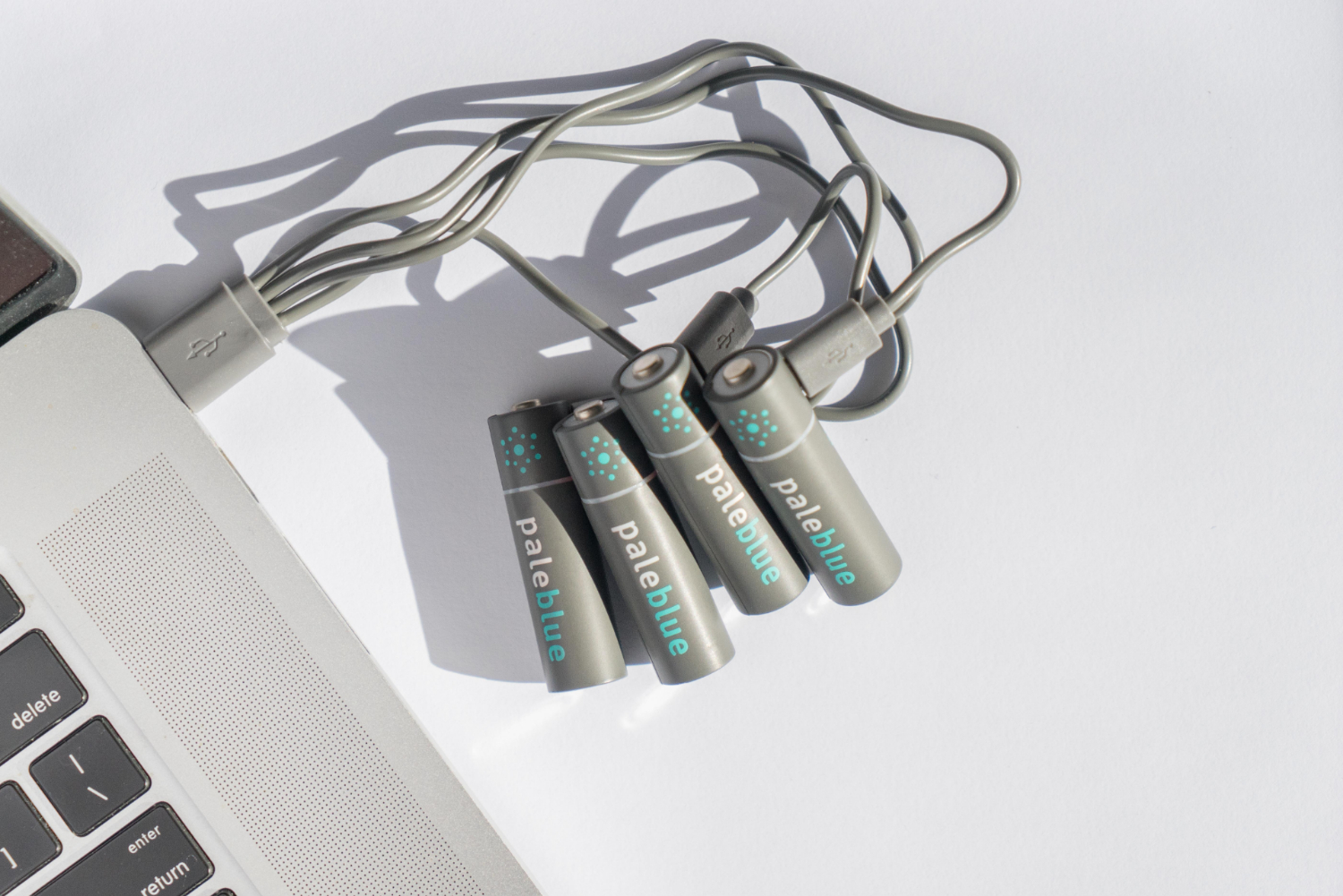If cost savings and convenience aren’t enough to bolster the argument in favor of using rechargeable batteries, the environmental impact of discarded single-use, non-rechargeable alkaline batteries is the topper. According to EPA statistics, Americans throw away more than 86,000 tons of alkaline batteries each year. That’s enough to circle the globe more than six times with the batteries placed end-to-end. Single-use batteries account for 20% of the household hazardous materials in our landfills.
Pale Blue lithium polymer (LiPo) smart batteries, currently in a Kickstarter crowdfunding campaign, can be recharged more than 1,000 times with a unique USB charging method. Presently with close to $100,000 in pledges, more than ten times the campaign’s all-or-nothing goal, the Pale Blue AA and AAA rechargeable batteries have advantages over both single-use alkaline batteries and nickel-metal hydride (NiMH) rechargeables.
A single Pale Blue battery can replace more than 1,000 alkaline batteries and provide more consistent power output than alkaline cells.
Pale Blues can be recharged up to twice as many times as NiMH rechargeable batteries. Probably even more significant for busy users than the number of charging cycles, Pale Blue’s LiPo batteries recharge to full power much faster than NiMH rechargeables. According to Pale Blue, the company’s AA cell batteries recharge to their full 1,560mAh capacity in under two hours and the AAA cells attain their full 450mAh power in less than one hour. NiMH batteries, by contrast, take up to nine hours to fully charge.
You don’t need to carry an old school multiple-cell battery charging case with an AC adapter cable to recharge Pale Blue’s smart USB LiPo batteries, either. Each battery has a micro USB port and an LED charge indicator light. You can plug a regular USB cable into the micro USB port with the other end of the cable plugged into a USB-AC adapter or a USB port on a computer, a lamp, wall outlet, or multiport charger.
To make it easier to recharge multiple batteries, PaleBlue includes a USB to 4-Micro USB cable with each set of 4 AA or 4 AAA Pale Blue batteries. The LED on each battery glows red during charging and then turns to green when the battery is fully charged.
There are still backer deals available for people who back the Pale Blue rechargeable battery Kickstarter campaign. A 4-pack of Pale Blue AAA batteries with a USB to 4-Micro USB charging cable is available for a pledge of $28, a $2 savings. You can also sign up for a 4-pack of Pale Blue AA batteries with a USB to 4-Micro USB charging cable with a pledge for $32. Quantity purchases save even more. For example, for a pledge of $80 and a $15 savings, Pale Blue will send one 4-pack each of AA and AAA batteries and two USB to 4-Micro USB cables. Pale Blue estimates delivery in November 2019 anywhere in the world.
We always encourage caution when participating in a crowdfunding venture.
